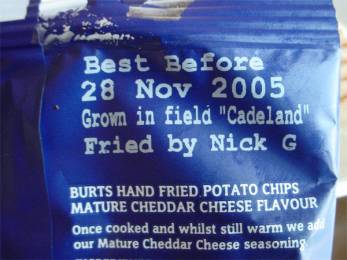
Food & drink
Is smoked the new raw?
Smoking might be out in the restaurant front of house, but it's smoking hot, so to speak, out the back in the kitchen.
What started with meat, fish and occasionally cheese is now found also in butter, salt, olive oil, garlic, fruit and other vegetables. Some bars are even introducing smoked flavours to cocktails. According to Amazon, sales of home smoking kits are up about 200 per cent and Waitrose has started to sell woodchips.
There are even a few specialist ‘smoking restaurants’ setting up, including Shotgun in London and BBQ cooking continues to go from strength to strength. So what’s going on here then?
According to Charles Spence, a professor of experimental psychology at Oxford University, we may have been conditioned to associate fire and smoke with meat and hence with the satisfaction of hunger. The smell of smoke might also be linked to primitive heat sources, which not only keep us warm in chilling times, but keep away threats lurking in the jungle.
This might be stretching things a little, but other counter-intuitive trends are appearing, such as an interest in chopping and stacking wood (the Scandinavian way), making clay pots and polishing proper shoes.
Perhaps this is a reaction against a world that is becoming increasingly global, accelerated and virtual. Digital connectivity is also driving volatility, so objects and experiences that allow us to connect physically through our hands and eyes, to age old practices, make sense.
You want a prediction? Smoking of pipes and cigars could come back and exist alongside e-cigarettes.
Ref: Daily Telegraph (UK), 5 March 2016, ‘Thank you for smoking’, by X. Clay.
www.dailytelegraph.co.uk
Search words: smoking, food
Trend tags: -
A fight between nature and science
Between 2007 and 2012 food inflation in the UK ran at 32 per cent. Globally, the population is growing quickly and with it the need to grow more food.
The idea that we’re all about to starve goes back to Malthus in the 18th century and perhaps to the Club of Rome’s Limits to Growth in the 1970s, but food availability is still an issue, especially as urban areas and customers’ desires for ultra-local food increase.
One solution is urban farming and, as online shopping expands, it’s possible that many former supermarkets and other disused buildings on the edge of towns and cities could soon become available for growing food.
The attraction of growing locally is hard to argue with. Transport is minimal and so too is spoilage. Many people are already growing high-margin micro-herbs in and around cities, but basil and rocket alone will not feed an entire city.
One solution is companion farming where fish are grown indoors alongside vegetables, while using fish poo as plant fertiliser. This is an ancient idea (apart from being indoors) but some people question the nutritional value of fish grown in essentially giant buckets and plants grown without sunlight or soil.
Proponents of indoor agriculture argue the majority of food sold in UK supermarkets is already grown “unnaturally” with chemicals in plastic poly- tunnels with little natural light - so what’s the difference?
We think people want to hear a story about where their food is from and the more local the better. Buying local food tends to bind people with their community. This has to be a positive trend in the long run, to counteract the rather dehumanising impact of technology.
Ref: Financial Times Magazine, 19-20 December 2015, ‘The future of food’ by T. Smedley
www.ft.com
Search words: indoor agriculture, urban farming, local
Trend tags: -
Confucian cuisine
Here’s something you don’t eat everyday. If braised hog rectum does appeal, you may be missing out. China is seeking to register with UNESCO this delicacy, along with other Confucian delights, as part of the country’s “intangible cultural heritage”.
Foodies apparently divide Chinese food into four, eight or 10 regional schools, but Confucian cuisine is not among them and the aspiration is more political than gastronomic.
Is this just another example of localism? Or is it political in the sense that’s it’s more about eschewing luxury than embracing heritage?
Ref: The Economist (UK), 16 January 2016, ‘Just add sage’, Anon. www.economist.com
Search words: Confucius, China
Trend tags:
Gin is back
Since 2012, sales of Gin in the UK have risen by 6 per cent in volume and by 18 per cent in value. Why?
Part of the reason is fashion. Millennials apparently demand locally made craft products far more than big brand names and the more obscure the better. But there are purely commercial supply side reasons too.
Whisky, for example, has to be stored for three years before it can be sold, whereas gin can be sold immediately. Gin can also be coloured and flavoured with almost anything and the profit margins on craft gin can be huge – almost double what big brand names make.
The British Government has launched an official London Gin Trail, stopping at 12 different gin spots in London. So clearly interests are quite commercial (it used to be called ‘mother’s ruin’).
Ref: The Economist (UK), 16 January 2016, ‘Gin trap’, Anon. www.economist.com
Search words: gin, whisky
Trend tags:
Restaurant trends
What’s next in restaurants? In the US, according to Newsweek magazine, it’s Instagram filters for food shots, cocktails for cats (!) at Meow Parlour, edible coffee cups, farmers markets (again), food blogs dedicated to home cooking (eg, Wisebread), bilingual burritos, 3D food printing, food transparency (aka provenance) and Nestle going au natural – essentially Nestle responding to consumer demands for more organic and local ingredients.
See also our story, Is smoked the new raw?
Ref: Newsweek (US), January/February 2016, ‘Reinventing the restaurant’, Anon. www.newsweek.com
Search words: Nestle, Meow Parlour, Instagram
Trend tags: -
